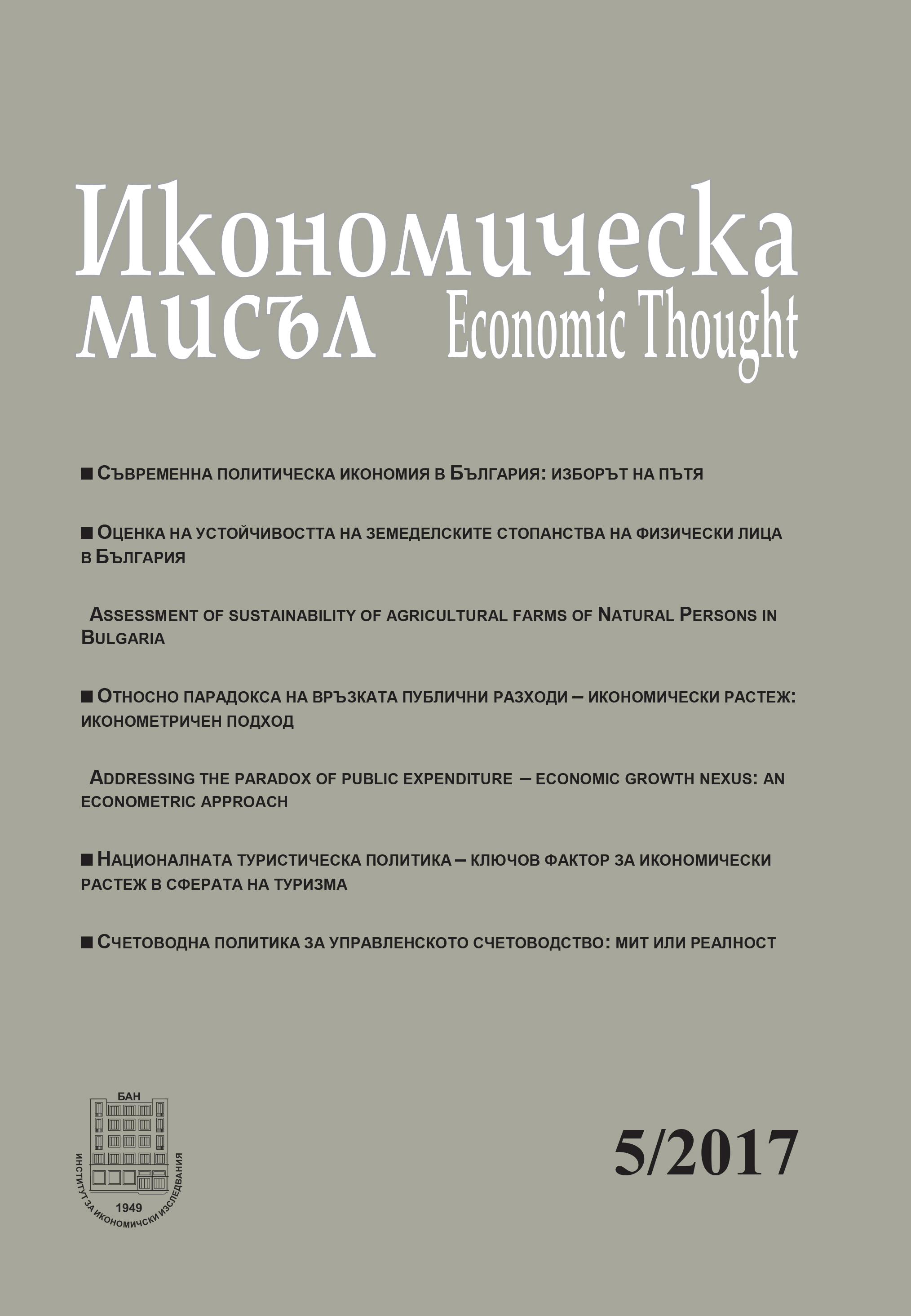Addressing the paradox of public expenditure – economic growth nexus: an econometric approach
Addressing the paradox of public expenditure – economic growth nexus: an econometric approach
Author(s): B. VenkatrajaSubject(s): Economy, Public Finances
Published by: Институт за икономически изследвания при Българска академия на науките
Keywords: economic growth; GDP; private consumption; government consumption; expenditure
Summary/Abstract: Since the introduction of economic reforms, Indian economy has been rapidly growing. Simultaneously, the government spending has also increased by multiple times. Interestingly, rapid rise in public expenditure has occurred during the era of speedy privatisation. The central issue of discussion is whether high growth is attributed to increased government spending and/or higher government spending is owing to rising economy. There are several theoretical propositions and empirical findings attempting to solve this puzzle but with no unanimity and their inferences are rather highly divided and fragmented. In this pretext, the present paper makes an effort to re-examine the direction of flow of relationship, nature of relationship and size of the relationship between government expenditure and economic growth in India in the long run through econometric modelling. In the course of investigating the nexus of relationship between economic growth and government spending, the study also aims to test whether Indian scenario validates the Wagner’s law or supports the Keynesian growth hypothesis. The underlying subject is investigated based on the data covering the economic reform period from1991-1992 to 2015-2016. Application of appropriate econometric techniques like cointegration test, estimation of Vector Auto Regression (VAR) model, Granger causality test, impulse response function and variance decomposition provide evidences of long-term relationship between growth and government spending. Results show that the size of the public sector is defined positively by the level of GDP growth in the long run and similarly, the variability in GDP is explained positively by the government expenditure. The findings of the study have evidences to support both Wagner’s law and Keynesian theory.
Journal: Икономическа мисъл
- Issue Year: 2017
- Issue No: 5
- Page Range: 109-128
- Page Count: 20
- Language: English

